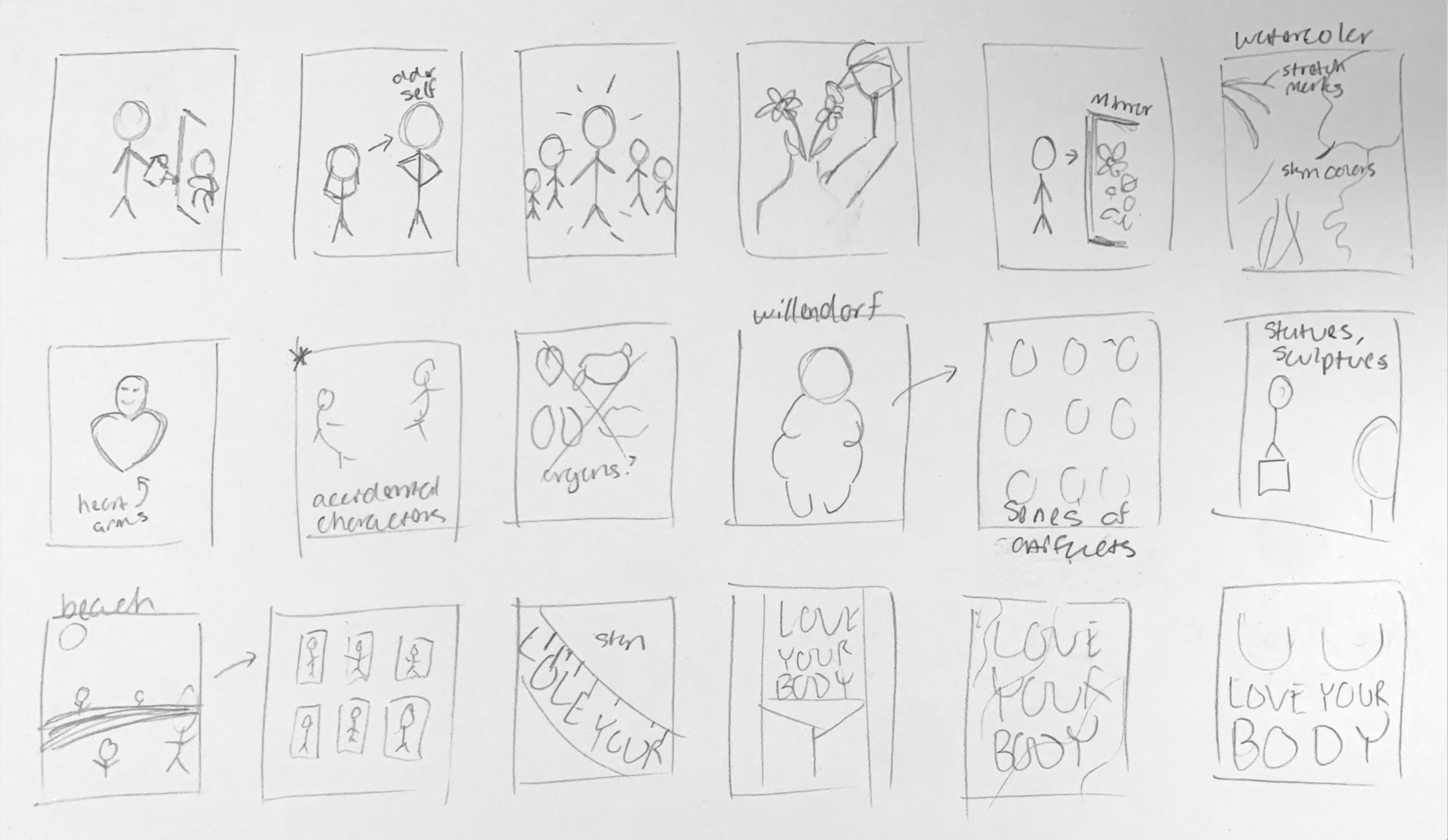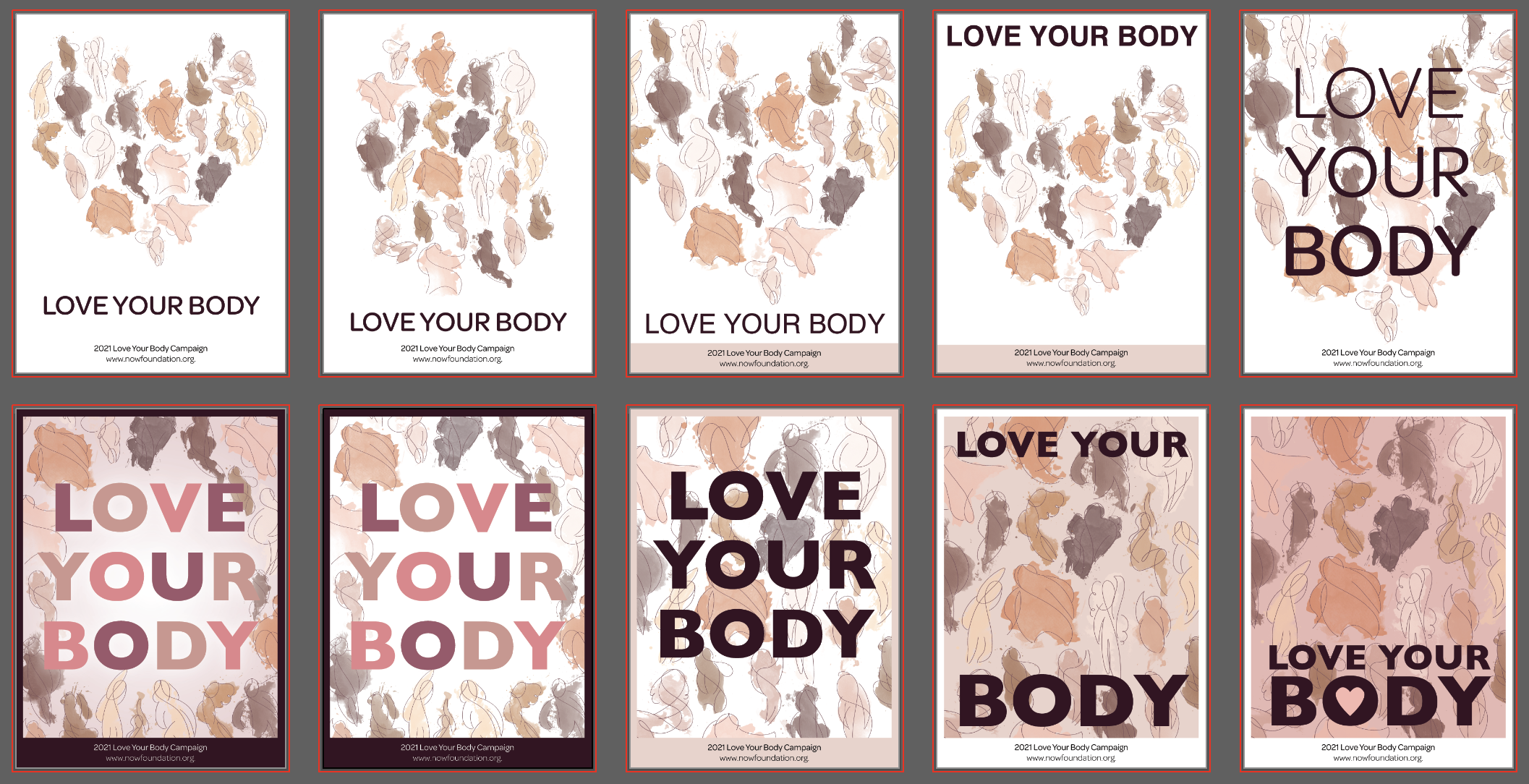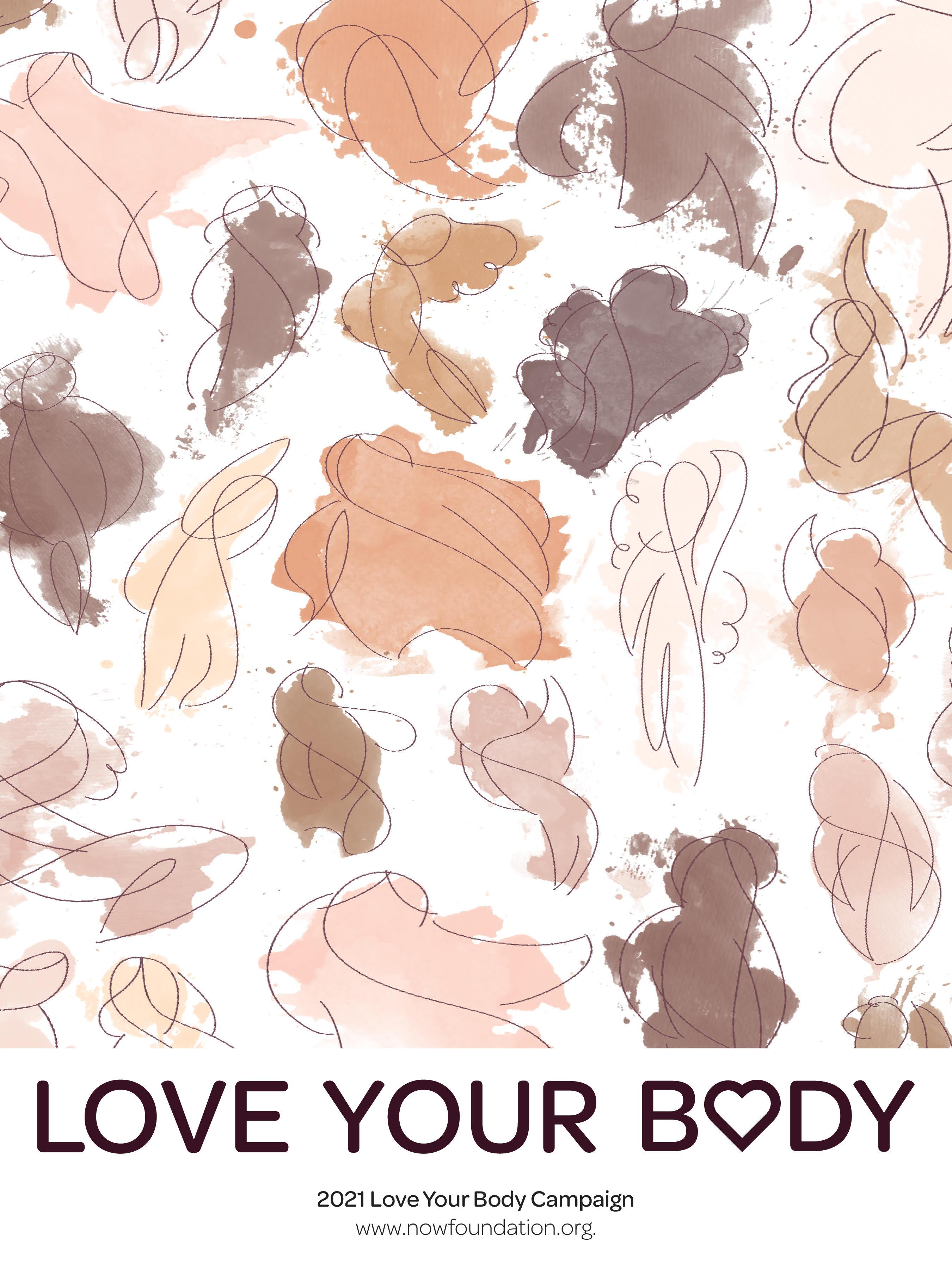Senior graphic design major Alexis Cleveland earned first place in the student category after submitting a poster to the The National Organization for Women’s Foundation (NOW) annual contest for their "Love Your Body" campaign.
Cleveland entered the national contest with an original poster showcasing an abstract and inclusive range of bodies, and won in a category that includes undergraduate as well as graduate students.
Winners are chosen based on their artwork and imagery that breaks the boundaries of what society views as the traditional beauty standards set for women and their bodies. According to the NOW contest guidelines, they look for posters and images that reflect how “beauty is not limited by body size, body type, ethnicity, age, or physical appearance.”
Cleveland was mentored through the project by Amy Bartell, art instructor and coordinator of Community Art Exhibitions. Bartell saw the email from NOW and presented the contest to several students, and Cleveland took up the challenge.
“I try very hard to bring as many of these opportunities like these to students, especially ones that have such strong, deep roots in inclusive thinking,” Bartell said. “Anytime a student takes an opportunity like this, they are making the world a better place by stepping up and saying “I want to get involved.”
“Amy’s really great about bringing these topics to light and sharing these thoughts and ideas,” Cleveland said. “At another school, I’m not sure they would have encouraged me as much as she did.”
‘Wonderful experience’
Bartell said that working with Cleveland was a wonderful experience because of how gifted of an illustrator she is. Although Cleveland is a senior and graduating in May, she has already been hired by WCNY in Syracuse where she previously completed an internship. “Alexis is an extraordinarily gifted illustrator who not only takes the time to produce the finished piece, but to do all of the development of the piece,” Bartell said.
Cleveland said that at the beginning stages of the project, she focused on research before even beginning to sketch. “People who aren’t familiar with design may not realize how much work goes into a project,” Cleveland said. “I didn’t just draft and submit, there was a lot of research that went into it.” Cleveland then put together over 50 thumbnail sketches for her and Bartell to review.
“Working with Alexis meant that I got to see several stages of her work. We discussed sketches, we discussed concepts,” Bartell said. “We also discussed what it means to represent bodies -- literally -- and how our choices are so important visually.”
“She helped point me in the right direction because some of my sketches weren’t as great and some of them were better,” Cleveland said. “The idea we went with for my poster was ‘accidental characters,’ which is like an illustrative technique where you use random blobs and splashes and draw over it.”
“For every line that she used, for every color that she used, for every shape that she used, there are other lines and colors and shapes that you don’t use,” Bartell said. “To think about the weight those visual images hold -- and I mean weight in terms of importance -- we got to talk a lot about impact and the importance of trying to use her images to represent the broadest brush possible for body image.”
After the initial review of her thumbnails, Cleveland then created five rough drafts to review in a process critique with Bartell. This process helped Cleveland produce about 15 drafts total. Of those 15 drafts, Cleveland and Bartell then landed on the poster that Cleveland submitted to the contest.
Cleveland had about one month to finish the poster project prior to submitting to NOW. She said she didn’t hear for quite a few months about the results until one day she received an email letting her know that she had taken the first place prize in her category. (See series of sketches below for visual presentation of the development of the project.)
Throughout the poster project, Cleveland said the process helped her develop and grow as an artist. “Working on this project was something new to me as it was more of an abstract work. I do more literal and very straight-to-the-point design,” Cleveland said. “As an artist, I learned a new way to draw. To me, they all look like human figures even though there’s only a few lines for each of them.”
Campaign addresses unrealistic beauty standards
NOW created the "Love Your Body" campaign to shed light on the unrealistic and inequitable standards that are applied to women and their bodies as created by modern media and the beauty industry.
As reported by NOW, these beauty standards come from the media’s tendency to underrepresent and hypersexualize women, especially women of color. It also stems from inaccurate and harmful representations of women.
“Women in media have been underrepresented for quite some time, particularly since the beginning of media in TV,” said Jennifer Fogel, who teaches broadcasting at Oswego. “In newspapers, you would often see women relegated to sections such as the Lifestyle section. We didn’t really see hard news about women unless they committed some sort of scandalous crime.”
Throughout history, women of color have borne the brunt of this issue. Safiya Umoja Noble writes in her book, “Algorithms of Oppression,” published in 2018 by New York University Press, “Popular culture provides countless examples of Black female appropriation and exploitation of negative stereotypes either to assert control over the representation or at least to reap the benefits of it.”
Fogel agrees. “Women of color were even more marginalized [in media] than white women when it came to content representation in terms of numbers of how many women of color we actually saw,” Fogel said. “And, when they were portrayed, when they weren’t invisible, they were marginalized to particular characteristics and tropes which was always in contrast to the pure white woman.”
With conversations of equity on the forefront of everyone’s mind, they are highlighted in this project when it comes to how women are visually portrayed. The "Love Your Body" campaign works to challenge media like advertising and how we can change the conversation.
“Advertising, even though they know better -- even though they know that women can be seen in different shapes and sizes and in different roles -- they are still very much trying to continue what has been done in the past,” Fogel said. “As far as the effects of advertising, there certainly is this image about what femininity is supposed to be, an image of what beauty is supposed to be, and that certainly can affect our feelings about what it can take to achieve that certain look.”
Bartell ties the significance of the Cleveland’s participation in the poster project and conversation around portrayal of women together. "We don’t always think about bodies and body image as something that falls under the umbrella of diversity, equity and inclusion, but in fact it’s a very important topic, an important message and an important visual that Alexis put in front of people by doing the work she did.”

Series of initial sketches by Alexis Cleveland

More detailed rough draft sketches for Love Your Body poster by Alexis Cleveland

Top 3 poster designs developed by Alexis Cleveland before final submission into Love Your Body poster contest




